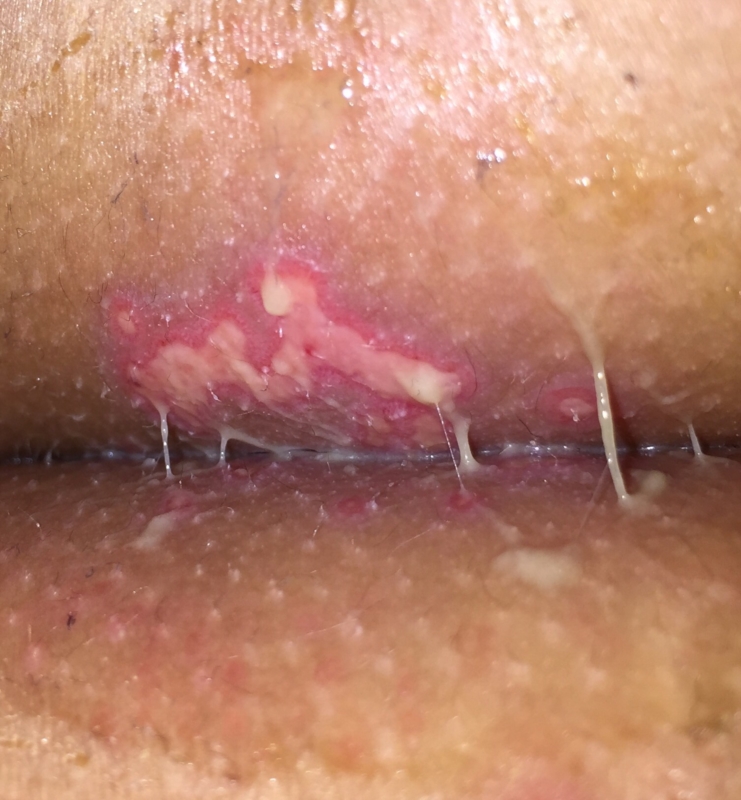Buttock Crack Infection

Introduction If you are reading this website, you are probably looking for a better way to treat your pilonidal disease. Please read on Over the past century, many patients with pilonidal disease have received suboptimal care, as many medical practitioners (including surgeons) don’t fully understand the root cause of pilonidal disease and also underestimate its impact on the lives of young patients. Many doctors continue to believe that the cause of pilonidal disease is a congenital cyst (i.e., a cyst present from birth).
This is not true. Corel photo paint x3 portable free download. There is no cyst. Pilonidal disease is simply an infection under the skin between one’s buttock cheeks that typically arises from a trapped hair or fiber.
Jul 29, 2011 - It's more of a chronic infection or abscess than anything. My husband calls it. Everyone has a Pilonidal sinus opening in their butt crack. Butt Crack Yeast Infection. As a result, yeast infection usually appears on skin that involves a lot of friction. The areas of predilection include perineum, bum crack, anus, groin, genital area, and the axillary and submammary folds. Because the mentioned sensitive areas are warm, moist, and vulnerable to friction and damage.
It’s an acquired disease. It’s challenging to treat because of where it develops, the moist airless environment there, and the repeated pressure of sitting, and motion in the region. Many surgeons choose to treat patients with disfiguring, wide-excisional operations hoping to resect the elusive cyst.
The problem is that many of these radical operations: 1) don’t work and lead to a recurrence and, 2) even if they eventually fix the problem, have a long recovery which is often miserable for the patient and his/her caregiver. When these operations fail they often make the problem worse. Moreover, few surgeons want to tackle pilonidal disease. Even fewer care to operate on patients that have failed surgery from other surgeons. Sternberg: premier expert in pilonidal disease As I started my fellowship in 1999, I was one of those physicians who were reluctant to treat a patient with pilonidal disease. But the turning point came when I expressed this concern to an attending who knew of ‘a better way’ to treat the disease and invited me to join him for cases. From that time, and through visits with John and Tom Bascom, I learned a technique that made sense and worked.
Since then, increasingly difficult cases obliged me to innovate variations that have led to my current technique. I now have a better way to cure pilonidal disease: I have extensive experience performing an operation called the Cleft Lift procedure (approximately 1,500 cases since 2002) and perform it regularly, curing almost 100% of patients.
So why do I want to operate on patients with difficult pilonidal problems? 1) I truly am gratified when I improve a patient’s quality of life, and 2) the operation that I perform cures almost every patient, even when they’ve failed prior surgical attempts. I am committed to helping cure pilonidal patients of their disease, and, in the long run, wish to change the way other doctors treat patients with pilonidal disease so these patients have access to reliable and appropriate care. Pilonidal disease overview Pilonidal disease (pie-low-NIE-dul), a chronic infection of the skin and underlying tissue near the tailbone, is a common disorder. It typically affects people in their teens, 20’s, and 30’s and often disappears by the age of forty.

In its most severe form, pilonidal disease can be very debilitating, causing daily discomfort and limiting activity. Most operations reported to cure the disease are not reliable. Many sufferers of pilonidal disease become discouraged in their search for curative treatments as many surgeons, and medical practitioners continue to misadvise patients to consider disfiguring procedures with high recurrence rates. This website provides basic information about pilonidal disease and its treatment. The most reliable and successful surgical treatment to date, the ‘’ is discussed in detail. How this website can help: You are likely viewing this website because you or someone you care about has pilonidal disease. Perhaps, you have already had surgery for a pilonidal abscess (often incorrectly referred to as a cyst), and the procedure didn’t turn out quite as well as you or your surgeon had anticipated.